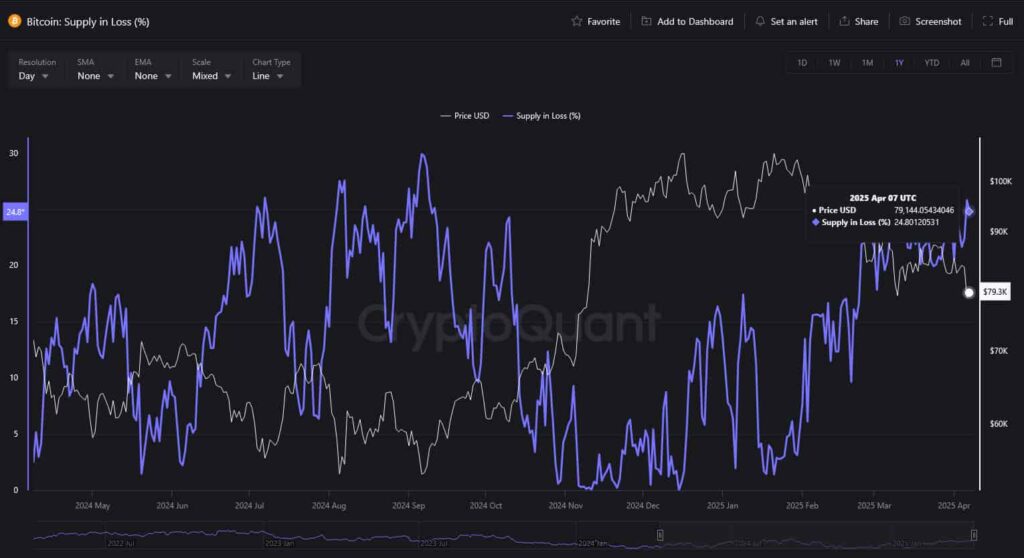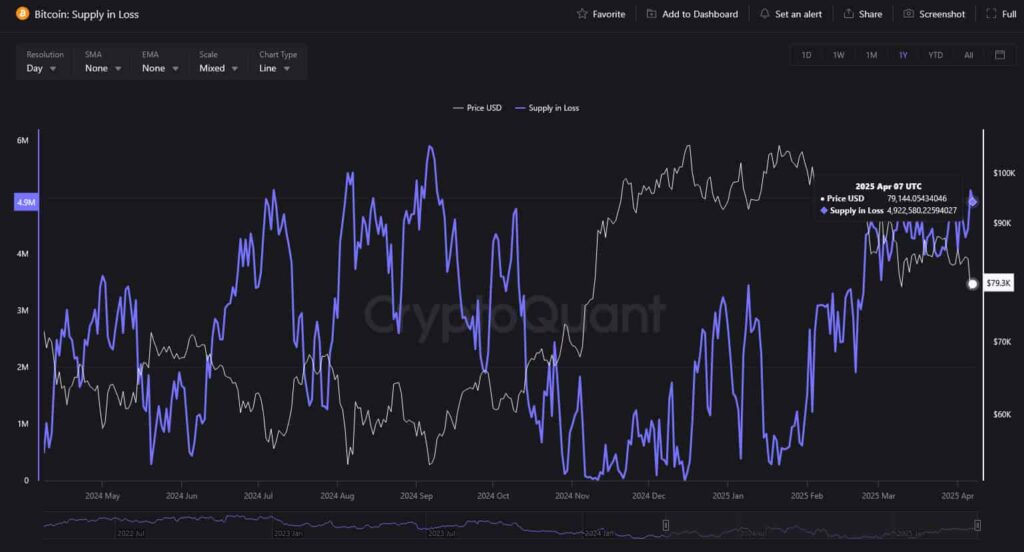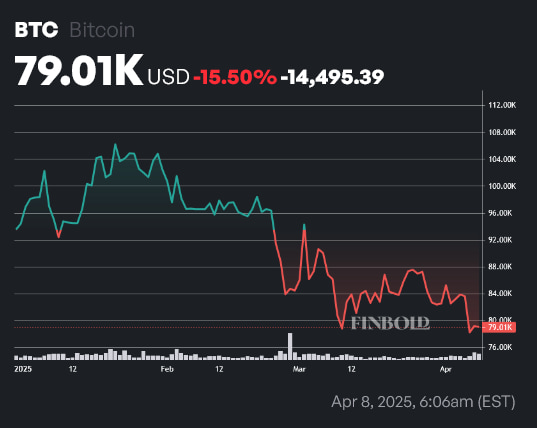As of the time of writing, nearly 5 million Bitcoins (BTC) are being held at a loss, representing almost a quarter of total supply.
Data retrieved by Finbold from market intelligence platform CryptoQuant on April 8 reveals that 24.8% of the digital asset’s supply is currently in the red.

To put that into perspective, that percentage equates to a staggering 4,922,580 BTC, a quite significant portion of Bitcoin’s capped supply of 21 million.

So, how much is that supply currently being held at a loss worth?
Accordingly, the 4,922,580 Bitcoins being held at a loss are currently worth roughly $388.95 billion — although with the significant volatility currently present in the cryptocurrency market, the figure will fluctuate, perhaps significantly so. A rebound back to $90,000 would severely diminish the supply held at a loss.
At press time on April 8, the leading cryptocurrency was trading at a price of $79,015, with year-to-date (YTD) losses standing at 15.50%.

Is the amount of Bitcoins held at a loss a death knell for the cryptocurrency?
To put it shortly — no. Although the figures might seem like a very bearish portent at first glance, a closer look at the charts provided above reveals that the share of Bitcoins being held at a loss has not surpassed a September 2024 peak.
That September peak was followed by a strong rally, so the present state of affairs in no way invalidates BTC’s long-term prospects. Moreover, the fact that such a large percentage of supply is in the red ever since the asset crashed below $80,000 indicates that strong levels of demand exist at sub-$80,000 prices, which could serve to staunch further losses in the short-term.
So, is this actually bullish? No — but it’s far from alarming. BTC has lost $1 trillion in market capitalization since the initial tariff announcements. It’s clear that the asset’s near-term price action will be determined chiefly by market-wide factors and macro outlooks. However, insights like these — and the fact that institutional investors seem to have intensified their acquisitions as of late, point to a more robust posture than what many initially anticipated.
Featured image via Shutterstock








